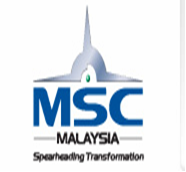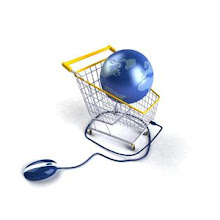
E-learning has become more and more important in this era, being the alternatives ways of modern education. Basically, e-learning means teaching/learning experience that uses Internet or computer networks to reach learners. Lately in most local universities, e-learning is used in some course or subject of study where the students rarely attend face-to-face for on-campus access to educational facilities, because they study online.
However, there are still pros and cons out of the implementation of e-learning for students.
The Pros
From student’s perspectives, e-learning would benefits them in term of lower delivery cost. It enables the student to access to study resources via internet , thus reducing their needs to travel to campus. In the long run ,this indirectly help the students waived quite an amount of money for traveling expenses to campus. They can save on expenses of purchasing books as well because they can access teaching materials through e-libraries. Furthermore, e-learning help students to communicate with their tutors, get clarifications regarding their subjects and study.
Besides that, it provides time convenience and flexibility to students. Because of non-class attendance learning, most students are able to draw out one or two days more during their free week to return to their hometown and still able to enjoy the learning process without affecting their studies. Students can get online resources, communicate with his tutor or class mates, send his query and write term paper at any time he can get access to the Internet.
The Pros

From student’s perspectives, e-learning would benefits them in term of lower delivery cost. It enables the student to access to study resources via internet , thus reducing their needs to travel to campus. In the long run ,this indirectly help the students waived quite an amount of money for traveling expenses to campus. They can save on expenses of purchasing books as well because they can access teaching materials through e-libraries. Furthermore, e-learning help students to communicate with their tutors, get clarifications regarding their subjects and study.
Besides that, it provides time convenience and flexibility to students. Because of non-class attendance learning, most students are able to draw out one or two days more during their free week to return to their hometown and still able to enjoy the learning process without affecting their studies. Students can get online resources, communicate with his tutor or class mates, send his query and write term paper at any time he can get access to the Internet.
The Cons
However, there are still a few cons in e-learning. Students feel that lack of face-to-face communication with teachers contributes lack of understanding between a themselves and a teacher. Face-to-face interaction is till the best communication techniques for teaching/learning.
Because of non-supervisory from anybody , students turns out to be lazy being non-motivated enough and having free time schedule for his e-learning. This may caused a low scope of the student’s knowledge and teacher’s accusation in lack of proficiency.
Most e-learning subjects or programmes doesn’t requires students to do any physical presentation of topic of study. This makes the students lack of knowledge of presentation skills that might be needed in real person face to face presentation in future.
However, there are still a few cons in e-learning. Students feel that lack of face-to-face communication with teachers contributes lack of understanding between a themselves and a teacher. Face-to-face interaction is till the best communication techniques for teaching/learning.
Because of non-supervisory from anybody , students turns out to be lazy being non-motivated enough and having free time schedule for his e-learning. This may caused a low scope of the student’s knowledge and teacher’s accusation in lack of proficiency.
Most e-learning subjects or programmes doesn’t requires students to do any physical presentation of topic of study. This makes the students lack of knowledge of presentation skills that might be needed in real person face to face presentation in future.



 E-government is one of the seven flagship applications introduced in MSC. The these flagships, seven main projects were identified to be the core of the e-government applications:
E-government is one of the seven flagship applications introduced in MSC. The these flagships, seven main projects were identified to be the core of the e-government applications:






 The services that provided by Blooming Florist Sdn Bhd to their customers:
The services that provided by Blooming Florist Sdn Bhd to their customers:

 Normally, cash is known as a mean of exchange and of storing value in various forms. Nowadays, internet becomes more important for the people in the world. As a result of recent proliferation of computers, telecommunication links and modern method of rendering payment are receiving a great deal of attention form people. The example of the modern method of rendering payment is electronic currency.
Normally, cash is known as a mean of exchange and of storing value in various forms. Nowadays, internet becomes more important for the people in the world. As a result of recent proliferation of computers, telecommunication links and modern method of rendering payment are receiving a great deal of attention form people. The example of the modern method of rendering payment is electronic currency. ( a ) PayPal
( a ) PayPal

 (1) Closed system prepaid cards
(1) Closed system prepaid cards 

